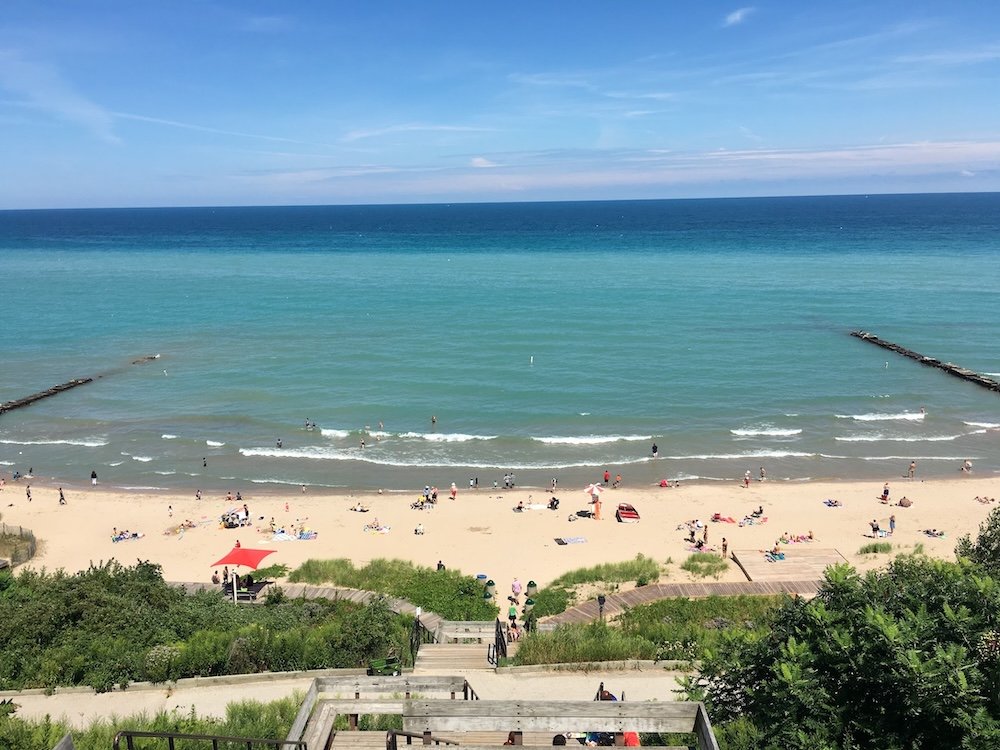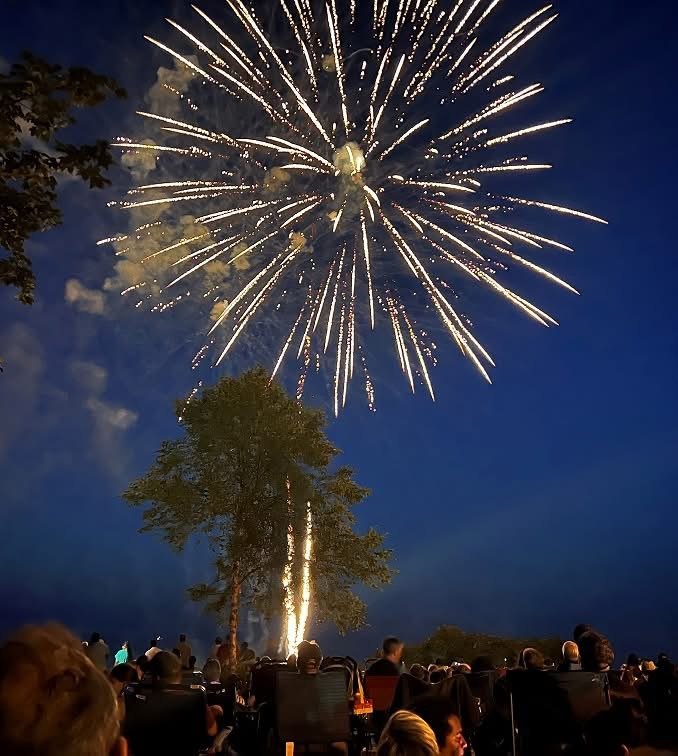A Guide to Spring Flowers in Milwaukee's North Shore
As the winter chill retreats and the first hints of green emerge, Milwaukee's North Shore transforms into spring blooms — if you know where to look. This comprehensive guide explores the best locations to witness this seasonal spectacle across Whitefish Bay, Shorewood, Fox Point, and other North Shore communities. From early bloomers pushing through the last patches of snow to the vibrant displays of mid-spring, this guide will help you experience the full progression of Milwaukee's spring awakening.
The first signs of spring arrive in Milwaukee's North Shore even while winter's grip hasn't fully released. These resilient early bloomers signal the changing season and provide a welcome splash of color after the long winter months.
The North Shore area offers numerous parks and natural spaces where spring flowers can be observed in their natural settings. Each location has its own unique character and bloom progression.
Doctor's Park (Fox Point)
This 49-acre Milwaukee County park located along Lake Michigan's shore bluff offers an excellent spring flower viewing experience. The park features wooded nature trails that wind down a ravine, creating diverse microclimates where different spring flowers thrive. The trails were renovated in 2021, making them more accessible for flower enthusiasts2.
Doctor's Park retains a natural, tranquil atmosphere because it's somewhat hidden in a residential area. This seclusion helps protect the delicate spring ephemeral wildflowers that carpet the forest floor in early spring. The wooded ravine not only showcases spring flowers but also offers gorgeous foliage scenery as the season progresses2.
Atwater Park (Shorewood)
Marek Landscaping to plant approximately 3,000 dune grasses along the shoreline
This gorgeous 5-acre bluff-top park in Shorewood provides a different type of spring flower viewing experience. While the park is known for its spectacular Lake Michigan views, the large open lawn areas and borders burst with spring color as the season advances. The switchback trail leading down to the beach area passes through zones where wildflowers flourish in the unique lakeside environment.
Atwater Park serves as a hub for community events throughout the spring and summer, making it a lively spot to combine flower viewing with other seasonal activities. The park's excellent maintenance and diverse plantings ensure continuous blooms from early spring through summer.
Wildflower Hiking Destinations
For those willing to venture a bit farther afield, several locations near Milwaukee's North Shore offer exceptional wildflower hiking experiences where spring blooms can be observed in more natural settings.
Havenwoods State Forest
Havenwoods State Forest is a short drive from the North Shore and offers one of Milwaukee's most rewarding spring wildflower experiences. This urban state forest features diverse ecosystems where delicate trilliums, wild geraniums, and vibrant violets create pockets of color among the awakening woodland.
The forest's varied terrain includes wetlands and upland areas, providing different bloom progressions as spring advances. For photography enthusiasts, the dappled light filtering through the emerging tree canopy creates perfect conditions for capturing these delicate blooms.
Sanger House Gardens
This hidden gem in Brewers Hill provides a more intimate garden experience compared to larger botanical institutions. Sanger House Gardens showcases how spring-flowering plants can be incorporated into home landscapes, offering inspiration for North Shore residents looking to enhance their own gardens.
The historic setting combined with thoughtful plant selection makes this a worthwhile destination for spring flower enthusiasts. The gardens demonstrate how traditional and native plants can be combined to create extended seasonal interest.
Native Plants for Spring Garden Inspiration
St. Monica student weed out Silver Spring Park in Whitefish Bay
Understanding which native plants thrive in Milwaukee's unique climate can help homeowners create their own spring flower displays while supporting local ecosystems.
Benefits of Native Spring Bloomers
Native plants are naturally adapted to Milwaukee's local soil, weather patterns, and ecosystem, making them an ideal choice for landscaping. They typically require far less watering, fertilizing, and maintenance compared to non-native varieties4.
By incorporating native spring bloomers into home gardens, North Shore residents can create landscapes that connect with Milwaukee's natural heritage while providing essential early-season resources for pollinators. These plants have evolved alongside local wildlife, making them particularly valuable for ecosystem health4.
Recommended Native Spring Plants
Several native species provide reliable spring color in Milwaukee gardens. Smooth Aster adds late-season color with clusters of purple flowers that attract pollinators. Rattlesnake Master, with its spiky, globe-like flowers, brings unique texture while being highly drought-tolerant.
While many native plants bloom later in the season, incorporating early bloomers like Bloodroot can extend the spring display in home gardens. Bloodroot features white petals and distinctive lobed leaves, making it one of the first woodland flowers to bloom in early spring.
To make the most of your spring flower viewing experiences while preserving these delicate blooms for others to enjoy, consider these guidelines.
Spring flowers in Milwaukee often follow a predictable progression, but exact timing varies with each year's weather patterns. Early bloomers like Snowdrops and Crocus typically appear in February and March, while Spring Ephemerals peak in April. Northern Roughleaf Dogwoods start blooming in May and continue into summer.
For the best viewing experience, plan multiple visits throughout the season to witness the changing progression of blooms. Early morning visits often provide the best light for photography and less crowded conditions at popular spots.
When enjoying spring flowers, stay on designated trails to avoid damaging delicate vegetation. Many spring ephemerals are particularly vulnerable to trampling, which can prevent them from returning in subsequent years.
Practice "leave no trace" principles by refraining from picking wildflowers. Not only is this prohibited in most parks and natural areas, but it also removes vital resources for pollinators and prevents plants from completing their life cycle and producing seeds for future generations.
Milwaukee's North Shore offers a wealth of opportunities to experience the progression of spring through its flowering plants. From the earliest Snowdrops pushing through the last snow to the vibrant displays of later spring, each location provides its own unique perspective on this seasonal transition.
Whether you prefer the manicured settings of botanical gardens, the natural beauty of wooded parks, or simply appreciating the plantings in neighborhood green spaces, the North Shore area delivers abundant spring flower viewing opportunities. By timing your visits to catch different bloom periods and exploring various locations, you can experience the full spectrum of Milwaukee's spring awakening—a seasonal show that rewards those willing to venture outdoors after the long Wisconsin winter.








Discover the best of Shorewood dining with highlights from the Milwaukee Foodie community. Explore hidden gems, local favorites, and must-try spots recommended by Milwaukee food lovers.